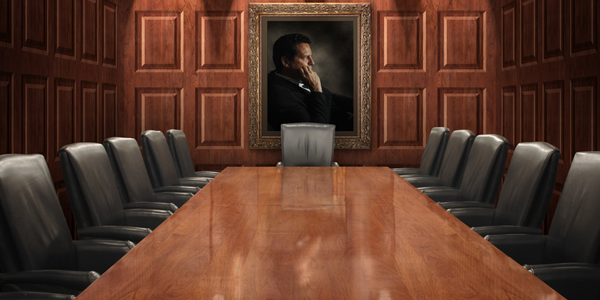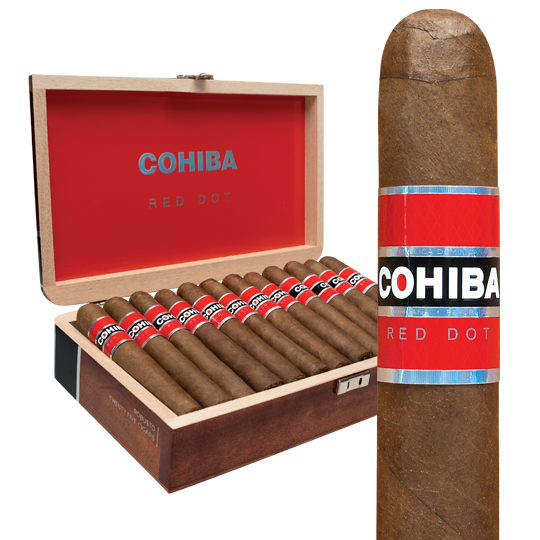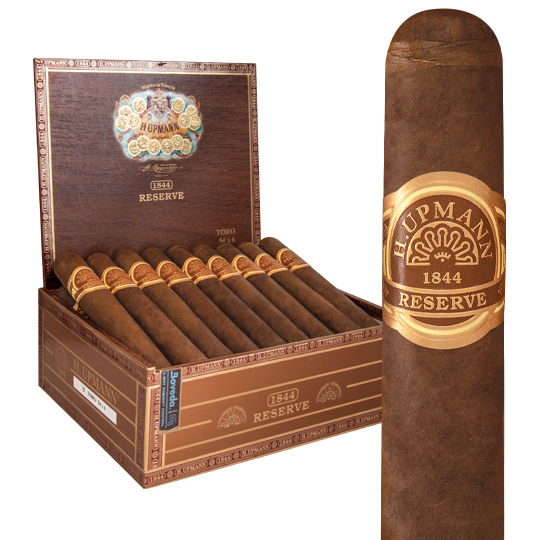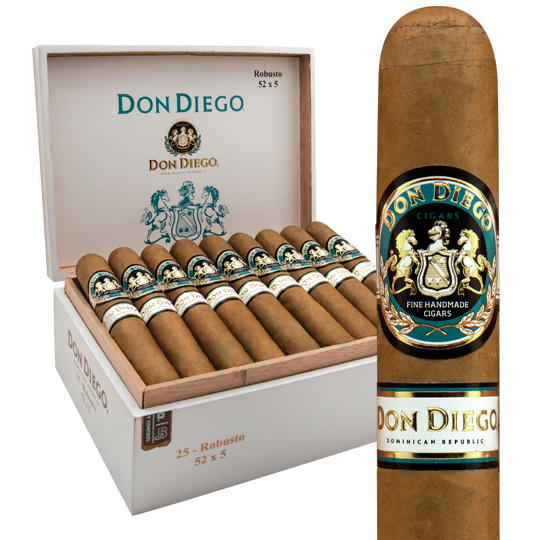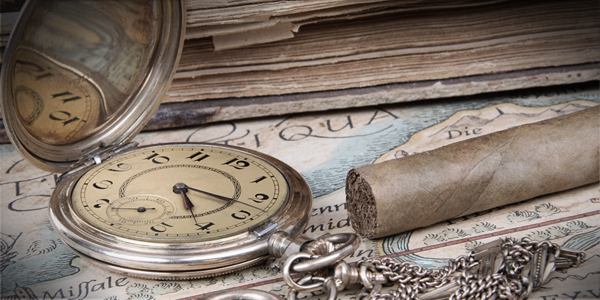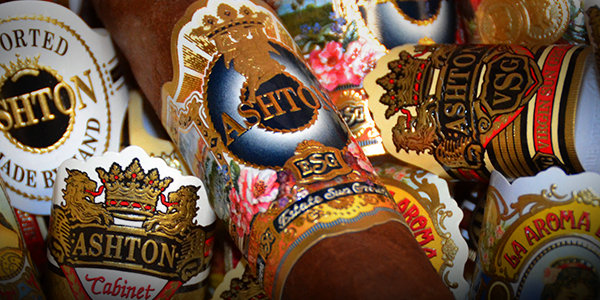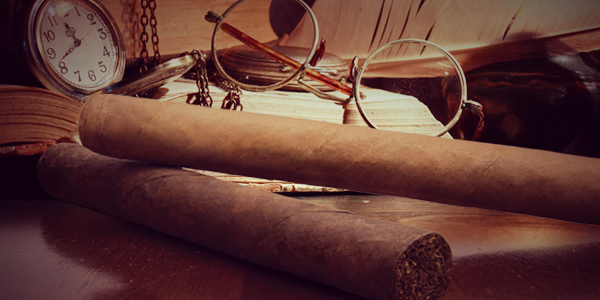The History of Smoking in the Boardroom
In 1980, I recall vividly my uncle telling me that he could not imagine sitting through a meeting without smoking a cigar. He was a top officer in a large financial institution, the kind that one associates with the term ‘too big to fail.’ He was a ‘fat cat.’ And he operated from smoke-filled rooms. That might as well be ancient history. Today, lighting a cigar in any company’s conference room or office would likely result in a reprimand and/or lawsuit. As of 2019, almost every state in the US now bans smoking in the workplace. Clearly, that has not always been the case. I mean, didn’t you watch Mad Men?
Hollywood has generally perpetuated the idea that cigars are synonymous with power, most of the time power used for evil purposes. Remember Michael Douglas as Gordon Gekko in the 1987 movie Wall Street? ‘Greed is good,’ Gekko told his audience. So were the Cohibas Gekko favored, helping to solidify his bad guy status.
That image comes from a time in the 19th and 20th centuries when cigars were relatively expensive and could be enjoyed only by the wealthy in their (usually all-male) private clubs. Business would be conducted. In the 1980s, cigars were still being smoked in many offices, not to mention boardrooms. Famous corporate bosses shared their cigar stories with Cigar Aficionado.
Jonathan S. Linen smoked cigars to keep the bugs away when he served in Vietnam. He gave them up for a while after leaving the Army, but resumed when he became vice chairman of American Express in 1970. There were many more smokers then, Linen recalled.
“In the old days, you could smoke anywhere, at any meeting and anytime,” he said. People walked through the halls of the company with cigars ready to be lit, waiting until they got into an office or conference room to set the blaze to a cigar or cigarette. “There was no distinction,” Linen added. “The previous chairman, Howard L. Clark Sr., set the example.”
Bob Lutz, now 86, has the distinction of having served as a top officer of each the ‘big three’ US auto companies. By the time he got to Chrysler, smoking was no longer allowed in the office, but Lutz always kept a box nearby. He often would hold a cigar in his hand to relax.
“I learned to associate the cigar with peace, relaxation, friendship and beautiful locations,” Lutz recalled in 1996. He always favored Cuban cigars. Cohiba and Flor de Cano were favorites. Lutz used to smoke at shareholder meetings until a shareholder stood up and gave a speech about the evils of tobacco. The meetings became non-smoking affairs after that.
Citicorp’s vice chairman in 1995, Christopher J. Steffen said Lutz gave him his first cigar, a Cohiba, when Steffen worked as the controller at Chrysler. Steffen gave up cigarettes. He would take cigars to the office in a leather case. His daily cigars started off mild, with a Davidoff 4000 or 5000.
“As the day goes on, I like the cigar to get stronger,” he said.
Lutz’s predecessor at Chrysler was the legendary Lee Iacocca. Iacocca, now 94, was so closely identified with smoking cigars that in 1981 Don Diego cigars chose Iacocca as its face in a series of ads called ‘A Man and His Cigar.’ Lutz once shared that Iacocca had given him a cigar that Iacocca assured was a Cuban. But it had a sort of bright green wrapper. Lutz pointed out to Iacocca that the band had ‘Printed in the USA’ on it. Iacocca profanely and loudly told Lutz it was a Cuban.
“Efrem Zimbalist, Jr., gave it to me,” Lutz reported Iacocca insisting, loudly. Later on in life, Iacocca was known to favor Cuban Cohibas and Montecristos. Rarely was Iacocca without a lit cigar.
“I spent five days in Cuba in 1994,” Iacocca recalled to Fortune magazine in 1996, “as a guest of Fidel Castro. I told him I wanted to see him before he died, and he told me the same thing. He gave me hundreds of Cuban cigars, which I could legally bring back to this country as a gift. I only smoke one a day now–doctor's orders–so I gave some of them away.” If only Lutz had gotten one of those, huh?
In 2009, Iacocca wrote in his blog, “I still smoke a cigar every day (not during Lent, however) and have a ‘finger’ of Dewar’s each evening.”
In 1995, Ron Perelman was on the cover of Cigar Aficionado. Perelman’s holding company had a portfolio including Revlon, Marvel Entertainment, Fleer trading cards, the Coleman (think camping) Company, First Nationwide Bank and New World Communications, among others. He was one of the wealthiest men in the world. Perelman also invested in Consolidated Cigar Corporation, which later became Altadis USA. Perelman was interviewed by Marvin Shanken, Cigar Aficionado’s publisher. Perelman indicated owning a cigar company had its advantages.
“They [Consolidated Cigar] actually do an H. Upmann for me at about a 38 ring gauge, a long, narrow cigar that I love,” Perelman told Shanken.
Alan ‘Ace’ Greenberg, who passed away in 2014, began smoking cigars in 1949 when he started working at the now-defunct Bear Stearns & Co. Back in the day, Greenberg recalled, the company would hand out Montecristos in the corporate dining room. The advent of the Cuban embargo led the company to switch to Dominican, Honduran and Jamaican cigars. By 1985, Greenberg was chairman of Bear Stearns, doing deals with, among others, Donald Trump and Ron Perelman.
“Ron kept me in cigars for quite a while,” Greenberg recalled. He smoked about three a day.
By the end of the 1990s, smoking had become largely restricted in most public settings. Concerns about second-hand smoke meant no smoking at work. Even if you’re the CEO of the largest state in the union.
In 2003, in a recall election, Arnold Schwarzenegger became governor of California. Among the first things Schwarzenegger did when he arrived at the capitol building in Sacramento, inside of which he could not smoke, was to erect a tent in which he could. And that tent became Schwarzenegger’s de facto office. He would take meetings there even with legislators who vehemently opposed tobacco.
“One can safely say," California State Librarian Emeritus Kevin Starr told the LA Times in 2004, “that never before in the history of California has its governor conducted significant business in a smoking tent.”
The tent had a large humidor in it, bottled water, bowls of peanuts and an H. Upmann ashtray with some cigar butts in it. Cohibas were among them.
Sadly, the stigma among the general public of the cigar smoker is still often fairly negative. Even stars like Michael Jordan, whose favorite cigar is a Cuban Hoyo de Monterrey Double Corona, did not publicly reveal his love-of-the-leaf until after he stopped playing in the NBA. Still, it was pretty well known among aficionados that Jordan loved cigars.
Today, in the US, it’s difficult to find a workplace where any cigar smoking is tolerated. When M. Shanken Communications, the parent company of Cigar Aficionado, moved offices to the west side of Manhattan, no longer could editors smoke in their offices. Now, there is a sort of ‘smoking bunker,’ well ventilated, on a totally separate floor. Editorial meetings and tastings are held there.
“At least it gets me out of the office,” joked one editor who wished to remain anonymous.

